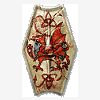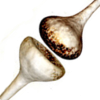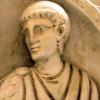Leaderboard
Popular Content
Showing content with the highest reputation on 2015-04-06 in all areas
-
What a hypocrite. The topic was already back to exactly where you wanted it...2 points
-
I think rams are over powered and I don't understand why thy can't be beaten with all melee troops. It does not make sense that you need a sword to bring them down. You can bring down a whole city with towers an castles with a few rams and some supporting units if your opponent doesn't have any strong swordsmen. The most promising strategy to counter rams and catapults seem to be using rams too. So you have rams against rams and rams against catapults. That's absurd in my opinion. (By the way, but off topic: since v17 everything depends on wood, that's no improvement in my opinion. In v16 it was up to your strategy, your civ and the phase of the game whether wood or malt where more important)2 points
-
Those armor variants are mainly for advanced / elite units. Unfortunately promotion of units has been disabled in Alpha 18. That could explain what you see.2 points
-
Hi everyone, Today I want to show you, what will be in the a19 release about atlas. The main idea is to give to all map makers more space to work over map. I hope you like, I will try to keep updating this post about my work. Here is the video New map: Object List filter(Include inside template content) Display Template, Entity Settings (with variations) This videos show terrain tab, Display settings, environment settings and Actor Viewer tool1 point
-
-Construction bug: Sometimes when ordering a group of men to build a wall, they will gather round a piece of the wall and they will seem busy building, but the wall isn't getting built. Sometimes selecting the men and ordering them again will fix it. -Ghost construction workers of the enemy. I was playing as Spartans against Atheneans(Computer; Petra bot) on the Cylcid Archipelago. At one point I had colonised an island just south of the island where the Atheneans had their base. I saw that enemy forts were being constructed on the north-east side of my newly colonised island, but no enemy men where there at all. I kept destroying the forts before they were built(the scaffolding), but they just kept being rebuilt, appearantly by nobody. -Graphic water bug: Horizontal bands appear in the water surface in most games. -A.I. bug/problem: Sometimes in levels where you are divided by water from the enemy(Petra bot), the enemy sometimes never bothers to cross the water with boats to colonise other land or attack you. Sometimes they never even build a dock. Is this a bug? Or an alternative, defensive strategy of Petra bot? It's kind of boring. If you're going to solve this I would like to suggest adding an option for varying degrees of A.I./difficulty. If this bug does NOT occur Petra bot is often incredibly difficult to beat or even survive. It's AMAZING how fast PetraBot can build large armies, gather loads of resources, upgrade their arms and age up. Too fast to be realistic. Though a nice "Hard" setting for the hardcore RTS gamer, it would make the game alot more fun to play if it had at least 1 other difficulty setting/A.I. level: One in which Petra bot is a bit slower in developping and where it is a bit easier to at least fend them off and keep up with them.1 point
-
Hello zzzippy, always cheerful i find you (its dmc btw) yeah this game isnt too balanced i dont think. I mean i was used to 15 or 16. But i liked that the matches would end quicker. Now it takes really long to destroy cc's and the likes, and the problem is that some players dont enjoy spending 1 hour or so on every match...granted some matches are fun for an hour, but if all of the are like that then it can get very boring.. I've heard similar things from other players too who are at uni or career, where at this point we enjoy playing a quick round or two rather than not bring a game to conclusion within an hour.. most players cement themselves down with tons of forts and towers, making the gameplay unbearably long...perpetually long... also i completely agree with KingAJ1 point
-
Absolutely not. The topic is: Alpha 18 Balance Feedback ...not that a game needs a vision, not comparing similar games, not Lions google_translated blahblah the forum gets spammed with all day long. But sigh, welcome on my ignore list ..1 point
-
1 point
-
I found this article in Livescience and i decided to post it on 0 AD forum, hopefully it may help a little bit: The mystery of an ancient battle between two warring troops of elephants has been solved, thanks to a modern genetic analysis of the lumbering beasts. Researchers have now found that Eritrean elephants, which live in the northeastern portion of Africa, are savanna elephants, and are not related to the more diminutive forest elephants that live in the jungles of central Africa. That, in turn, discounts an ancient Greek account of how a battle between two warring empires played out, with one side's elephants refusing to fight and running away, the scientists report in the January issue of the journal of Heredity. [10 Epic Battles That Changed the Course of History] Ancient battle In the third century B.C., the Greek historian Polybius described the epic Battle of Raphia, which took place around 217 B.C. in what is now the Gaza Strip, as part of the Syrian Wars. During these wars, Seleucid ruler Antiochus III the Great fought against Ptolemy IV Philopator, the fourth ruler of the Ptolemaic Dynasty in Egypt, whose last leader wasCleopatra. The matchup included tens of thousands of troops, thousands of cavalry and dozens of war elephants on each side. The elephants were the "ace in the hole," able to trample the enemy and sow terror with their massive size. "Elephants were considered the tanks of the time, until eventually the Romans figured out how to defeat war elephants," in later times, said study co-author Alfred Roca, an animal scientist at the University of Illinois at Urbana-Champaign. Antiochus had easy access to Asian elephants from India, but Ptolemy didn't. Instead, he set up outposts in what is now modern-day Eritrea to get African elephants. Unfortunately, that strategy didn't work out so well: According to Polybius' account, the African elephants turned tail and ran when they saw how gigantic the Asian elephants were. Ptolemy, however, was able to recover due to missteps by Antiochus and eventually won the battle. African elephants In reality, Asian elephants are smaller than African elephants, so some historians speculated that perhaps the Ptolemies were using African forest elephants, which tend to be smaller, Roca said. So Roca and his colleagues conducted a thorough genetic analysis of the elephants found in Eritrea, the descendants of the losers in the ancient battle. "We showed using pretty much every genetic marker, that they were savanna elephants," Roca told LiveScience. "This was contrary to some speculation that there may be forest elephants present in that part of the world." The team also found that there were just 100 to 200 African elephants left in isolated pockets in Eritrea, which could make them susceptible to inbreeding in the future. Ancient myths The findings suggest that Polybius had it wrong, and the African elephants got spooked for some other reason than the overpowering size of the Asian elephants. In other ancient documents, "There were these ancient semi-mythical accounts of India, and they claimed that India had the biggest elephants in the world," Roca said. Polybius, who wasn't actually at the battle, likely read those accounts and surmised the Asian elephants' bigger size caused their opponents to panic. In fact, until about the 1700s, when scientists actually measured the two, most people still thought Asian elephants were the larger species, Roca said. (And even now, games such as Age of Empires that recreate the Battle of Raphia depict the Ptolemaic elephants as smaller.)1 point
-
1 point
-
Added Object List filter(Include inside template content). Please Look at the first post about the video1 point
-
El problema es que actualmente el juego está basado en fases no épocas aun que puede ser igualmente valido. Me gusta la idea de los templos y el aura de bonificación, había pensado en desbloquearlo como tecnologías. Ahora con los monumentos no todas las facciones tienen tantos monumentos. --------------------------- Some suggestion are related with art departament, is a lot of work, but I see you use good graphic design ( 3d may be) to support your ideas may be you can contribute with us.1 point
-
More generally, Atlas should share the same keyboard shortcuts as the game, at least for everything that is UI-related.1 point
-
Not sure if this would be something worth pursuing, but I recently posted it in another thread. Thought it was relevant to this discussion: ...there was an idea in the past that you could make a selection in Atlas of multiple entities and save them as a "group". These groups could be then be added to a player's custom pallet of tools. So perhaps it was a collection of trees, rocks, shrubs and bushes - and you define/call that "TemperateGroup01" or something. Atlas saves (or "copies") the x,y (not z) and rotation of each entity/actor into that group xml file. This could then be recalled at any time later and "pasted" onto the terrain, conforming itself to the terrain. The group could be rotated like what is featured in the new alpha release video. The group would conform to the terrain and the z height would be altered for placement as required. I'm not sure if this was documented or implemented, but it might be worth looking into to achieve what I think is what your going after here with this farm idea?1 point
-
When in texture paint mode, you can shift-click on a texture and that texture will be automatically assigned to your paint brush.1 point
-
I always missed a list of used textures, so you can quickly swap the brush. Is is really hard to memorize the texture names.1 point
-
Roman Arms and Armor (Some of these are corrections): Weapons: Pugio: The long, wide Roman dagger, likely modeled after the Xiphos, used by Late Republic and Principate Era Roman soldiers (100 BC - 200 AD) Gladius Hispaniensis: A Short Sword between 22 and 28 inches long used until approximately 250 BC through 50 BC by Republican infantry. Gladius Pompeiensis: A modern term for the classic "Pompeii-Type Gladius" that featured from roughly 25 AD through 250 AD by Roman Infantry. Spatha: A Roman longsword used by Cavalry that first appeared in about the time of Marius, and by 250 AD was also used by Roman Infantry. There are a number of Spatha types, including Lauriacum-Hromovka, Gold Hilt Spathae, etc. Hasta: The 7-foot Roman spear. It was later called the Contus and was lengthened to 8-10 foot by the 4th century AD. Pilum: The Roman heavy javelin identified by use of a tang, a four-sided pyrimidal point, and a long 60-90cm Iron shaft. It was in use as early as about 300 BC, and was phased out by about 250 AD. It was standard for Roman Heavy infantry at that time. Spiculum: A Late Roman version of the Pilum, which had a shorter 30-60cm Iron shaft, a barbed head, and was socketed rather than tanged. Lancaea/Verrutum: Two names for the Roman Light Javelin, which had a leaf-bladed or pyramidal head. The term Verrutum only dates to the Late Roman Era (250-630 AD) but the Lancaea was used from the Early Republic to the Late Empire (300 BC - 630 AD) Scutum: The Roman shield, usually rectangular-ish in shape. In the Late Era it just meant shield in general. Clipeus: A term referring to the Ovoid shields used by the Auxiliaries in the Late Republic and Principate. It was also used by Cavalry, and sometimes was Hexagonal. Parma: A Smaller Round shield, used by the various officers like the Vexillarius, Aquilifer, Tubicen, Cornicen, etc. Armor: Lorica Hamata - The actual Roman term for maile armor, which was adopted by the Romans from the Greeks or the Gauls in the 3rd century BC. It remained in use until the Fall of Constantinople in 1453, but underwent some design changes. Lorica Squamata - The Roman term for Scale and Lamellar armor. It was in use before Hamata and remained in use until 1453 as well. It also referred to Roman Scale gorgets and Roman Scale coifs. Lorica Segmentata - The modern term for the Roman segmented armor, which was in use from about 14 AD to 280 AD Lorica Plumata - A term for rigid scales attached to a maile backing, was highly decorative and added little aditional defense, but had a huge psychological effect because they were shiny and looked like feathers. Lorica Musculata - The Roman term for their Bronze, and later Iron, Muscle Cuirasses. Pectoralis - The Small Breastplate used by Republican Roman soldiers, IIRC it also referred to the Three-Disc armor as well. Subarmalis - A very light, thin leather or linen undergarment for armor, equipped with Pteruges which were strips that hung down from the arms or over the thighs. It was actually very uncommon amongst infantry, although used often by officers. Thorocomachus - The Late Roman Subarmalis, which was about an inch thick and made of linen with a goatskin covering. This was actually designed to absorb blunt force blows, unlike the Subarmalis. Balteus: The Roman Belt. The decorative strips hanging down that displayed a soldier's wealth were each called a Cingulum and are often mistaken for a groin guard. In the Republican era, Cingulum may have also referred to the Second belt worn by Roman soldiers. Cassis/Galea - Terms for the Roman helmet Oracae (Also Ocrea) - Greaves Manica - Roman segmented arm armor in use from about 50 AD through about 600 AD. Tunica - The Roman Tunic. The Tunica Manicata was the decorative Late Roman version. Sagum - Roman Rectangular cloak. The Abolla was very similar and popular in the Republic and Late Empire. Paenula - Roman hooded cloak, rectangular or ovoid in shape. Cucullus - A Roman hood. Fascia Ventralis - Cloth waist sash worn under a belt or for lack thereof Udones - Socks Caligae - The Classic Roman sandals in use from about 50BC through 150 AD Calcei/Carbatinae - Roman boots, the difference was their construction. Calcei were 1-piece construction while Carbatinae were 2 piece construction. Later on, low-sided boots were called Campagi and these date from the 4th-6th centuries AD. Pileus Pannonicus - Roman Pillbox cap popular from the 2nd through 5th centuries AD Pileus - Roman descendant of the Greek Pilos cap. Phrygian caps may have also been called this. Greek Arms and Armor: Armor: Mitra - A small groin plate used on the Bell Cuirass, not the Muscle Cuirass. These fell out of use beginning in about the 5th century BC. Spolas (pl. Spolates) - A Greek Tube and Yoke Cuirass, made of thick, heavy leather and udually painted. This is what is depicted and mistaken for the so called "Linothroax." Linothorax - A Greek thick, quilted linen armor. It was not made of glued linen as popular belief would have it, and was likely adopted from Egyptian quilted linen armor.1 point

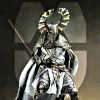
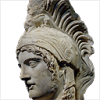

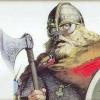
.thumb.png.ce58cea22940c255f5b0a735d5abee36.png)
